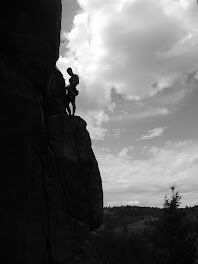Social Learning is defined as follows:
Social learning theory focuses on the learning that occurs within a social context. It considers that people learn from one another, including such concepts as observational learning, imitation, and modeling. (retrieved from http://teachnet.edb.utexas.edu/~lynda_abbott/Social.html)
Social Learning Theory posits that people learn from one another, via observation, imitation, and modeling. The theory has often been called a bridge between behaviorist and cognitive learning theories because it encompasses attention, memory, and motivation. (retrieved from http://www.learning-theories.com/social-learning-theory-bandura.html)
Systems learning theory (team learning)
Systems learning theory: from Senge's concept of "team learning." Team learning in this context focuses instead on the transmission of both tacit and explicit knowledge throughout the group as well as the creation of an environment in which focused creativity can flourish. Three aspects of team learning were identified as follows: "the ability to think insight fully about complex issues, the ability to take innovative, coordinated action, the ability to create a network that will allow other teams to take action."
Other applicable theories/concepts:
Cybernetics is the theory of communication and control based on regulatory feedback. Further definitions include: "a science concerned with the study of systems of any nature which are capable of receiving, storing, and processing information so as to use it for control"-A.N. Kolmogorov
"Cybernetique= the art of growing"--A.M. Ampere
In the book Communities of Play the author Celia Peace identified communities of play in the context of communities of practice. Communities of practice can be defined as: Community of Practice (CoP) is the process of social learning that occurs and the shared sociocultural practices that emerge and evolve when people who have common goals interact as they strive towards those goals. (retrieved from http://en.wikipedia.org/wiki/Community_of_practice). And as follows: community of practice defines itself along three dimensions:
- What it is about – its joint enterprise as understood and continually renegotiated by its members
- How it functions mutual engagement that bind members together into a social entity
- What capability it has produced – the shared repertoire of communal resources (routines, sensibilities, artifacts, vocabulary, styles, etc.) that members have developed over time.
Pearce used the following definition for community of practice as "a group of individuals who engage in a process of collective learning and maintain a common identity defined by a shared domain of interest or activity." Furthermore the definition of community is offered as an association of individuals with a collective will that is enacted through individual effort.
What does it mean to learn? How long has it been since you have looked at the definition: Learning is acquiring new knowledge, behaviors, skills, values, preferences or understanding, and may involve synthesizing different types of information.
Another related concept is that of autopoetic systems which are 'structurally coupled' with their medium, embedded in a dynamic of changes that can be recalled as sensory-motor coupling. This continuous dynamic is considered as at least a rudimentary form of knowledge or cognition and can be observed throughout life-forms.
Finally the concept of "participative pedagogy," as defined by Rheingold is that "we must develop a participative pedagogy, that focuses on catalyzing, inspiring, nourishing, facilitating and guiding literacies essential to individual and collective life in the 21st century.
Ultimately connectivitism ties all of the above together, fundamentally connectivism is the acquisition and distribution on knowledge across a network of connections. George Siemens asserts that learning is primarily social while Stephen Downes that learning can occur without a society. Further observations identify learning as an immersion into one's community, that learning is social. Connectivism takes the above concepts and theories one step further and recognizes how the underlying technology facilities or provides a platform for the creation of a personal learning network.


